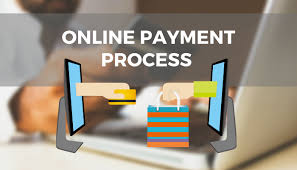In today’s digital world, online payment processing is becoming increasingly popular and important for businesses of all sizes. Whether you’re just starting out or you’ve been in business for years, understanding how online payments work and how to accept them can be a helpful way to boost your bottom line.
There are a few different ways to process online payments, and the method you choose will likely depend on your business’ needs. Some of the most common online payment methods include:
Credit Cards: One of the most popular ways to pay online is by credit card. You can use a service like PayPal or Stripe to accept credit card payments on your website or through an online invoicing system.
Debit Cards: Debit cards are another common payment method, and they can be used in a similar way to credit cards. You can use a debit card to pay for goods and services online, or you can withdraw cash from an ATM.
Bank Transfers: Bank transfers are a safe and convenient way to send money online. You can use a service like Venmo or Zelle to send money from your bank account to another person’s bank account.
Digital Currencies: Digital currencies like Bitcoin are becoming increasingly popular as a way to pay for goods and services online. You can use a digital currency exchange to convert your fiat currency into a digital currency, and then you can use that digital currency to pay for goods and services online.
With so many different options available, it can be difficult to know which one is right for your business. The best way to decide is to consider your needs and what would work best for your customers. Once you’ve decided on a payment method, you can start accepting online payments in no time.
If you’re just getting started, there are a few things you need to do before you can start processing online payments. First, you’ll need to set up a payment gateway. A payment gateway is a software that allows you to accept credit card and debit card payments on your website. There are a variety of payment gateway providers available, so you’ll need to compare features and pricing before you decide on one.
Once you have a payment gateway set up, you’ll need to create an account with a merchant processor. A merchant processor is a company that will process your credit card and debit card payments for you. There are a variety of merchant processors available,
After you’ve set up a payment gateway and a merchant processor, you’re ready to start online payment processing.To do this, you’ll need to create a checkout page on your website. This checkout page will include a form for your customers to fill out their payment information. Once your customers have entered their payment information, they’ll be able to submit their payment and complete their purchase.
If you’re not sure how to create a checkout page, there are a few resources available to help you. You can find tutorials online or hire a web developer to create a custom checkout page for you.
Once you have a checkout page set up and your customers are able to complete their purchase, you’ll need to process their payments. To do this, you’ll log into your payment gateway account and enter the necessary information. This information will include the amount of the purchase, the credit card or debit card number, and the expiration date. After you’ve entered this information, you’ll be able to process the payment and complete the transaction.
Online payments can be a great way to boost your bottom line. By understanding how online payments work and how to set up a payment gateway and merchant processor, you can start accepting online payments in no time.

